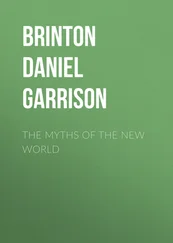Daniel Brinton - The American Race
Здесь есть возможность читать онлайн «Daniel Brinton - The American Race» — ознакомительный отрывок электронной книги совершенно бесплатно, а после прочтения отрывка купить полную версию. В некоторых случаях можно слушать аудио, скачать через торрент в формате fb2 и присутствует краткое содержание. Жанр: foreign_antique, История, История, foreign_edu, на английском языке. Описание произведения, (предисловие) а так же отзывы посетителей доступны на портале библиотеки ЛибКат.
- Название:The American Race
- Автор:
- Жанр:
- Год:неизвестен
- ISBN:нет данных
- Рейтинг книги:4 / 5. Голосов: 1
-
Избранное:Добавить в избранное
- Отзывы:
-
Ваша оценка:
- 80
- 1
- 2
- 3
- 4
- 5
The American Race: краткое содержание, описание и аннотация
Предлагаем к чтению аннотацию, описание, краткое содержание или предисловие (зависит от того, что написал сам автор книги «The American Race»). Если вы не нашли необходимую информацию о книге — напишите в комментариях, мы постараемся отыскать её.
The American Race — читать онлайн ознакомительный отрывок
Ниже представлен текст книги, разбитый по страницам. Система сохранения места последней прочитанной страницы, позволяет с удобством читать онлайн бесплатно книгу «The American Race», без необходимости каждый раз заново искать на чём Вы остановились. Поставьте закладку, и сможете в любой момент перейти на страницу, на которой закончили чтение.
Интервал:
Закладка:
This is an important point, and applies to a series of archæological discoveries which have been announced from time to time from the Pacific coast. Thus, in Nicaragua, human foot-prints have been found in compact tufa at a depth of twenty-one feet beneath the surface soil, and overlaid by repeated later volcanic deposits. But a careful examination of all their surroundings, especially of the organic remains at a yet greater depth, leads inevitably to the conclusion that these foot-prints cannot be ascribed to any very remote antiquity. 10 10 See “On an Ancient Human Footprint from Nicaragua,” by D. G. Brinton, in Proceedings of the American Philosophical Society 1887, p. 437.
The singular changes in the Pacific seaboard are again illustrated along the coast of Ecuador and Peru. For some sixty miles north and south near the mouth of the Esmeraldas river there is a deposit of marine clay six or eight feet thick underlying the surface soil in a continuous stratum. Under this again is a horizon of sand and loam containing rude stone implements, and what is significant, fragments of rough pottery and gold ornaments. 11 11 J. S. Wilson, in Memoirs of the Anthropological Society of London , Vol. III., p. 163.
This shows conclusively that an extensive and prolonged subsidence took place in that locality not only after man reached there, but after he had developed the important art of the manufacture of clay vessels. This was certainly not at the beginning of his appearance on the scene; and the theory of any vast antiquity for such relics is not tenable.
The lowest, that is, the oldest, deposit on the eastern coast in which any relics of human industry are claimed to have been found, is that known as the “Columbian gravel.” This is considered by geologists to have been formed in the height of the first glacial period. From its undisturbed layers have been exhumed stones bearing the marks of rough shaping, so as to serve the purpose of rude primitive weapons. 12 12 The finders have been Messrs. H. P. Cresson and W. H. Holmes. From my own examination of them, I think there is room for doubt as to the artificial origin of some of them. Others are clearly due to design.
During the first or main Inter-glacial Period was deposited the “modified drift.” In a terrace of this material on the Mississippi, near Little Falls, Minnesota, Miss Babbitt found numerous quartz chips regarded by competent archæologists as artificial products. 13 13 Her account is in the American Naturalist , 1884, p. 594, and a later synopsis in Proceedings of the American Association for the Advancement of Science , 1889, p. 333.
They represent the refuse of an early workshop near the quartz veins in that vicinity, and were cast aside by the pristine implement-maker when the Minnesota glacier was receding for the last time, but still lifted its icy walls five or ten miles above the present site of Little Falls.
The extensive beds of loess which cover many thousand square miles in the Central United States are referred to the second Glacial Epoch. Professor Aughey reports the finding of rudely chipped arrowhead in this loess as it occurs in the Missouri Valley. They lay immediately beneath the vertebra of an elephant, an animal, I need scarcely add, long since extinct. Another proof of man’s presence about that date is a primitive hearth discovered in digging a well along the old beach of Lake Ontario. According to that competent geologist, Professor Gilbert, this dated from a period when the northern shore of that body of water was the sheer wall of a mighty glacier, and the channel of the Niagara river had not yet begun to be furrowed out of the rock by the receding waters. 14 14 G. K. Gilbert, in The American Anthropologist , 1889, p. 173.
Other finds which must be referred to about this epoch are those by McGee of a chipped obsidian implement in the lacustrine marls of western Nevada; and that of a fragment of a human skull in the westernmost extension of the loess in Colorado. 15 15 W. J. McGee, “Palæolithic Man in America,” in Popular Science Monthly , November 1888.
More conclusive than these are the repeated discoveries of implements, chipped from hard stones, in deposits of loess and gravels in Ohio and Indiana, which deposits, without doubt, represent a closing episode of the last Glacial Epoch. There may be some question about the geologic age of the former finds, but about these there is none. They prove beyond cavil that during the closing scenes of the Quaternary in North America, man, tool-making, fire-using man, was present and active. 16 16 See G. Frederick Wright, The Ice Age in North America .
This decision is not only confirmed, but greatly extended, by the researches of Dr. C. C. Abbott and others in the gravels about Trenton, on the Delaware. These were laid down contemporaneously with the terminal moraine in Ohio and Indiana, from which the palæoliths were exhumed. Abbott’s discoveries include several hundred stone implements of the true palæolithic or “Chelléen” type, and some fragments of human skeletons. 17 17 Dr. Abbott has reported his discoveries in numerous articles, and especially in his work entitled Primitive Industry , chapters 32, 33.
They reveal to us not only the presence of man, but a well defined stage of culture strictly comparable to that of the “river drift” men of the Thames and the Somme in western Europe, which has been so ably described by De Mortillet. 18 18 De Mortillet, Le Préhistorique Antiquité de l’Homme , p. 132, sq.
Such discoveries have not been confined to the northern portion of the continent. Barcena reported the relics of man in a quaternary rock in the valley of Mexico. 19 19 Mariano de la Barcena, “Fossil Man in Mexico,” in the American Naturalist , Aug., 1885.
The geologists of the Argentine Republic describe others which must be referred to a very remote age. The writers who have given the most information about them are Ameghino and Burmeister. They found bone and stone implements of rude form and the remains of hearths associated with bones of the extinct horse, the glyptodon, and other animals now unknown. The stratigraphic relations of the finds connected them with the deposits of the receding Austral glacier. 20 20 Florentino Ameghino, La Antiguedad del Hombre en el Plata , passim. (2 vols, Buenos Aires, 1880.)
Such facts as these place it beyond doubt that man lived in both North and South America at the close of the Glacial Age. It is not certain that this close was synchronous in both the northern and southern hemispheres, nor that the American glacier was contemporary with the Ice Age of Europe. The able geologist, Mr. Croll, is of opinion that if there was a difference in time, the Ice Age of America was posterior to that of Europe. In any case, the extreme antiquity of man in America is placed beyond cavil. He was here long before either northern Asia or the Polynesian islands were inhabited, as it is well known they were first populated in Neolithic times.
The question naturally arises, did he not originate upon this continent? The answer to this is given by Charles Darwin in his magistral statement—“Our progenitors diverged from the catarhine stock of the anthropoids; and the fact that they belonged to this stock clearly shows that they inhabited the Old World.” 21 21 The Descent of Man , p. 155. Dr. Rudolph Hoernes, however, has recently argued that the discovery of such simian forms in the American tertiary as the Anaptomorphus homunculus , Cope, renders it probable that the anthropoid ancestor of man lived in North America. Mittheil der Anthrop. Gesell. in Wien , 1890, § 71. The Anaptomorphus was a lemur rather than a monkey, and had a dentition very human in character.
In fact, all the American monkeys, whether living or fossil, are platyrhine, have thirty-four teeth, and have tails, characteristics which show that none of the higher anthropoids lived in the New World.
Интервал:
Закладка:
Похожие книги на «The American Race»
Представляем Вашему вниманию похожие книги на «The American Race» списком для выбора. Мы отобрали схожую по названию и смыслу литературу в надежде предоставить читателям больше вариантов отыскать новые, интересные, ещё непрочитанные произведения.
Обсуждение, отзывы о книге «The American Race» и просто собственные мнения читателей. Оставьте ваши комментарии, напишите, что Вы думаете о произведении, его смысле или главных героях. Укажите что конкретно понравилось, а что нет, и почему Вы так считаете.












